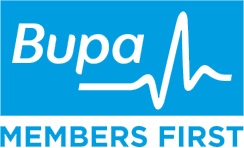clickhttps://www.avocat-guadeloupe.orghttps://www.pensionagnes.de/ blog linkdessin facile a faire sur coque de telephonecool phone cases
The Facts
Osteoporosis is a disease which reduces the density and quality of bone and affects 2.2 million Australians. The risk of fracture increases as bones become more porous and fragile. One in three women and one in five men over 50 will experience an osteoporotic fracture, which is often the first symptom of the disease.
So what can be done to prevent osteoporosis?
Healthy dietary and exercise habits when young, helps bones to become strong throughout life. A healthy bone diet includes adequate calcium, vitamin D and protein. Excessive skinniness in adolescents causes a low peak bone mass, which is hard to bring back to normal levels into adult years. Children who exercise for 40 minutes of regular vigorous exercise each day have significantly stronger bones than inactive peers.
These healthy bone habits need to continue throughout all phases of life. Unfortunately, exercise often becomes less frequent as we age, and this is having a significant impact on our bones. Furthermore, as physios, we rarely see patients for an exercise program to maintain healthy bones and prevent osteoporosis. Patients often present when a diagnosis of osteoporosis or the earlier stage of osteopenia has been made.
What type of exercise do I need to do to help my bones?
The type of exercise we do for our bones will depend on our age and risk factors, but there are some basic elements to a successful program. The exercise program needs to include:
Progressive resistance training:
Progressive resistance training is lifting weights which become heavier over time. The exercises need to feel challenging to have the desired effect on bones. Often there are other disease states, like arthritis and general deconditioning that makes lifting heavy loads difficult. For these reasons, we recommend that you seek appropriate instruction and supervision from a physio or exercise physiologist when you start and gradually build up the resistance as things improve.
Moderate-High Impact Training:
Regular weight-bearing activities like running, jumping, skipping, dancing, basketball and tennis are excellent examples of high bone-building activities. However, not all exercise is the same. Swimming and walking have no bone-building benefits. Click here for more information on the impact of selected exercises on bone health. Unfortunately, as we get older, free movement exercise like dancing and tennis are not part of our weekly lives. We tend to move in a forward, straight-line direction with no jumping or quick movements. If there is a history of arthritis, previous fractures or falls, impact training may look more like moving up and down on toes, climbing stairs, marching on the spot or shuffling forward and sideways. So, the type of impact training needs to be sufficient to start to load the bone structures, but not be too high or progress too quickly, to cause injury.
Balance Training:
Balance doesn’t help bone strength, but it is essential for reducing the risk of falls. It therefore, should be a component of any program for bone health. Balance exercises should be tailor-made to suit individual abilities. Examples of advanced balance exercises include standing on one leg on an unstable surface with eyes closed and reaching forward. An example of a basic balance exercise is standing with one foot in front of the other and moving the head side to side.
So if you need help to get started on an exercise program to prevent or assist in the treatment of osteoporosis or osteopenia, our physio supervised exercise classes are a great place to start you on your journey. A thorough assessment of all the issues that you are having allows us to plan and adapt a suitable program. Supervised sessions to help get your technique right and progress along the way are crucial elements for a successful exercise program
References
- Beck, Belinda R. et al. (2016): Exercise and Sports Science Australia (ESSA) position statement on exercise prescription for the prevention and management of osteoporosis. Journal of Science and Medicine in Sport, Volume 20, Issue 5, 438 – 445)
- LB McMillan, A Zengin, PR Ebeling, D Scott - Prescribing physical activity for the prevention and treatment of osteoporosis in older adults)







Make an Appointment
COMPLEXICA BUILDING Level 1, 9 Charles St
West Lakes 5021
Call Us08 8347 2043